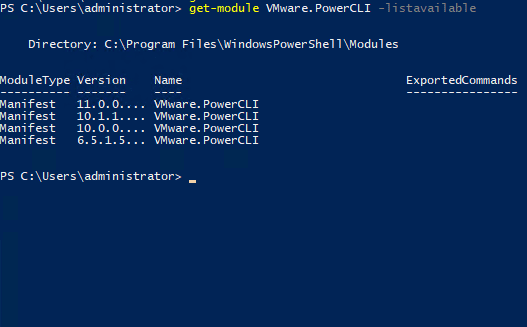

PowerCLI help installation, updating and troubleshooting tips
PowerCLI is a must have tool for every VMware Administrator when you want to automate something in your VMware environment. In this blog I highlight the installation, updating and some troubleshooting tips for deploying and running PowerCLI on Windows OSes.
PowerCLI installation
- Uninstall PowerCLI 6.x and earlier from the Add/remove programs or Programs and Features if exist.
- Make sure you have a internet connection.
- Check if Windows Management Framework 5.1 is installed for Windows 7,8 and Windows Server 2012 R2 and earlier OSes. Open PowerShell en enter:
- If WMF 5.1 is not installed. Install the WMF 5.1 can be downloaded here, link. Windows 10, Windows Server 2016 and above have PowerShell version 5.1 already installed.
- Installation PowerCLI
- Allow the execution of local scripts
- Disable certificate checking and CEIP
Install the VMware Horizon Module
- Download the Horizon modules from GitHub: Link
- Extract it
- Copy the VMware.Hv.Helper folder to the modules path
Updating PowerCLI
The following steps can be used to update a PowerCLI 10 or 11 installation
- Make sure you have a internet connection.
- Check the PowerCLI version
- Update the existing PowerCLI version
- Check the version of PowerCLI
Troubleshooting PowerCLI
The following troubleshooting options can be used when having problems with the installation and running of PowerCLI such as:
Could not load file or assembly……………….
- Disable the Anti Virus.
- Uninstall PowerCLI 6.x and earlier from the Add/remove programs or Programs and Features if exist.
- Uninstall PowerCLI.
- Check the paths for VMware modules entries in the path. Remove VMware folder if exist.
- List All the VMware modules and remove VMware modules.
- Check for old PowerCLI modules and installation such as:
- Delete the registry keys of the old PS snapins.

- Reboot the Windows system.
Try to install the PowerCLI module using a clean install as described above.

0 thoughts to “Vmware powercli download windows 10”